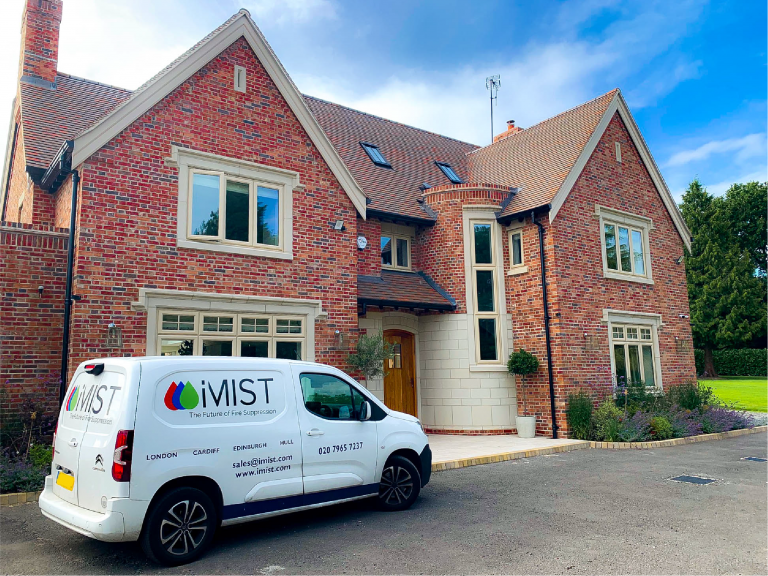Water Mist Fire Sprinkler Alternative
There are so many benefits of water mist fire suppression systems. Water mist systems are still a fairly new system in the market, and are gradually becoming more recognised by homeowners and property developers, increasing in popularity due to the ease of the system and the multiple benefits, especially when compared to fire suppression alternatives.
Damage Control
Post-fire damage is reduced due to water mist fire suppression systems discharging less water and mist being able to evapourate quickly.
No Tanks Required
Unlike sprinkler systems, iMist fire suppression doesn’t require you to have any tanks in your home, so you don’t have to loose expensive square meterage.
Removes Heat & Oxygen
As the mist attacks the fire, a percentage turns to steam particles that displace the heat and oxygen in the room, meaning all 3 parts of the fire triangle are attacked.
Quicker Installation
iMist uses only a percentage of water and uses custom flexible hoses compared with traditional large pipework used with sprinkler companies.
Less Water Useage
Water mist fire suppression systems require less water than traditional sprinkler systems on an average of 80%, which is even less than a fire brigade would use.
Low Cost
Due to installations being quicker, and less third-party requirements, iMist provide cost certainty fire suppression systems with no hidden costs.

Check out our case studies
Traditional Sprinkler Systems vs Automatic Water Mist Systems

Fire Sprinkler Alternative
The iMist system is a more environmentally friendly alternative to traditional fire sprinklers.
In the event of activation, the system uses less water, fed from the town water mains, which means saving space as there isn’t a requirement for a tank. With the use of less water, this also results in less damage to the property if required to be called upon.
If you’re looking to convert a historical property, or your existing property, the iMist system is flexible enough to retrofit, so could be the perfect solution for your renovation.
With the demand for more housing with the growing population, renovations of existing properties is becoming increasingly popular, along with the demand for stricter fire and building regulations.

